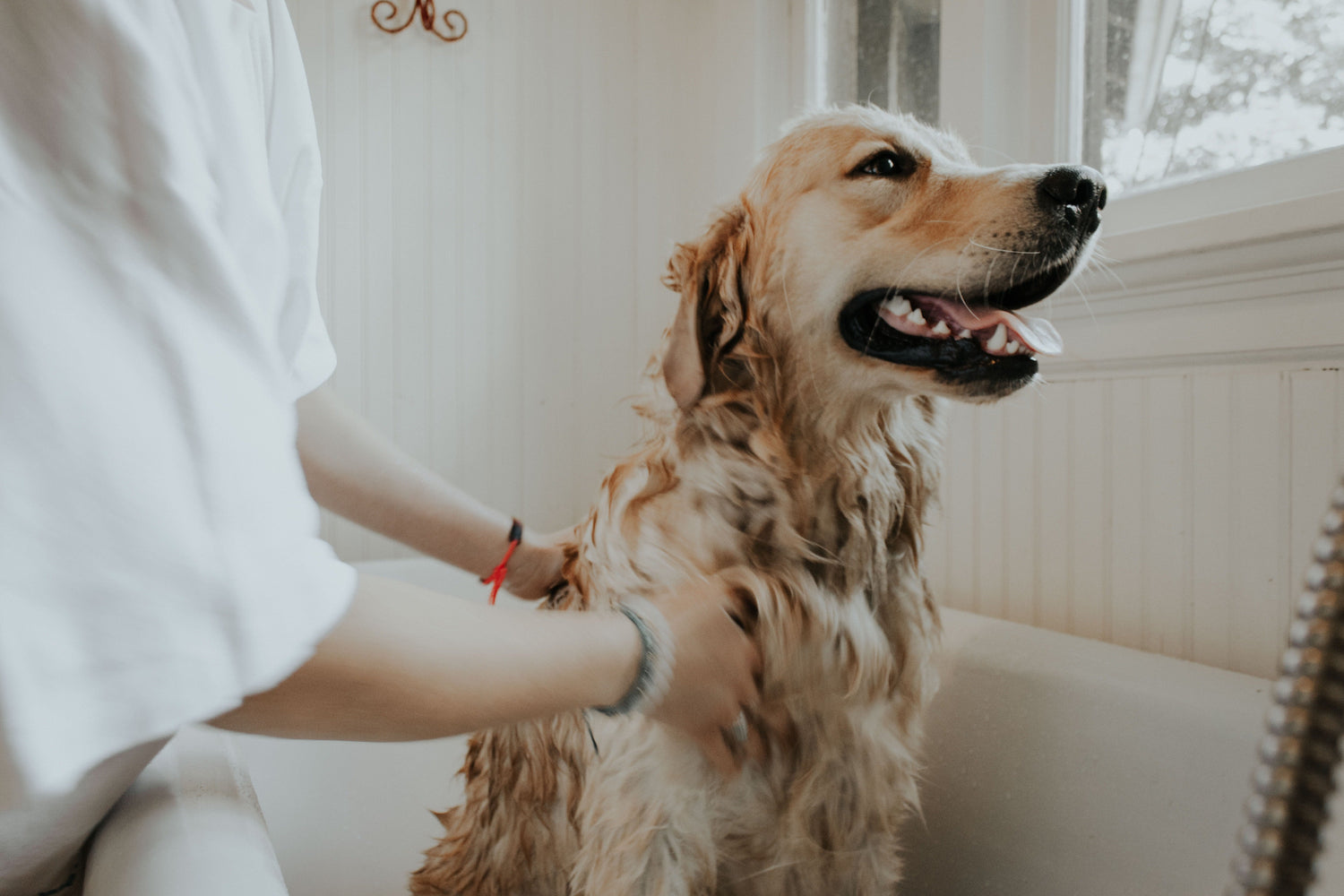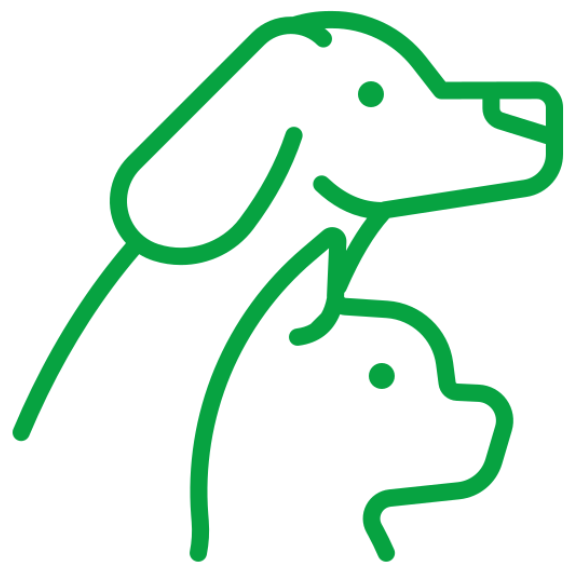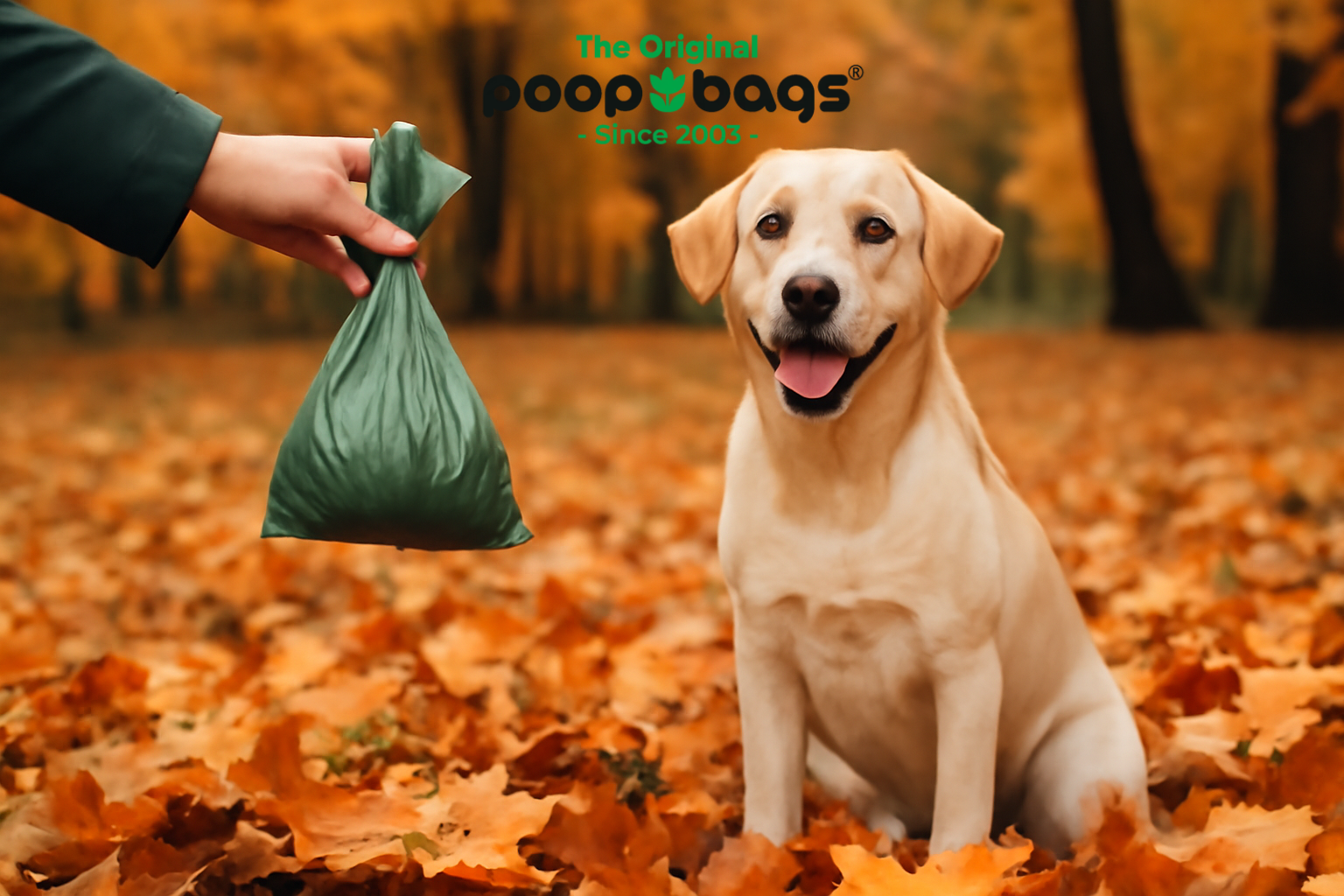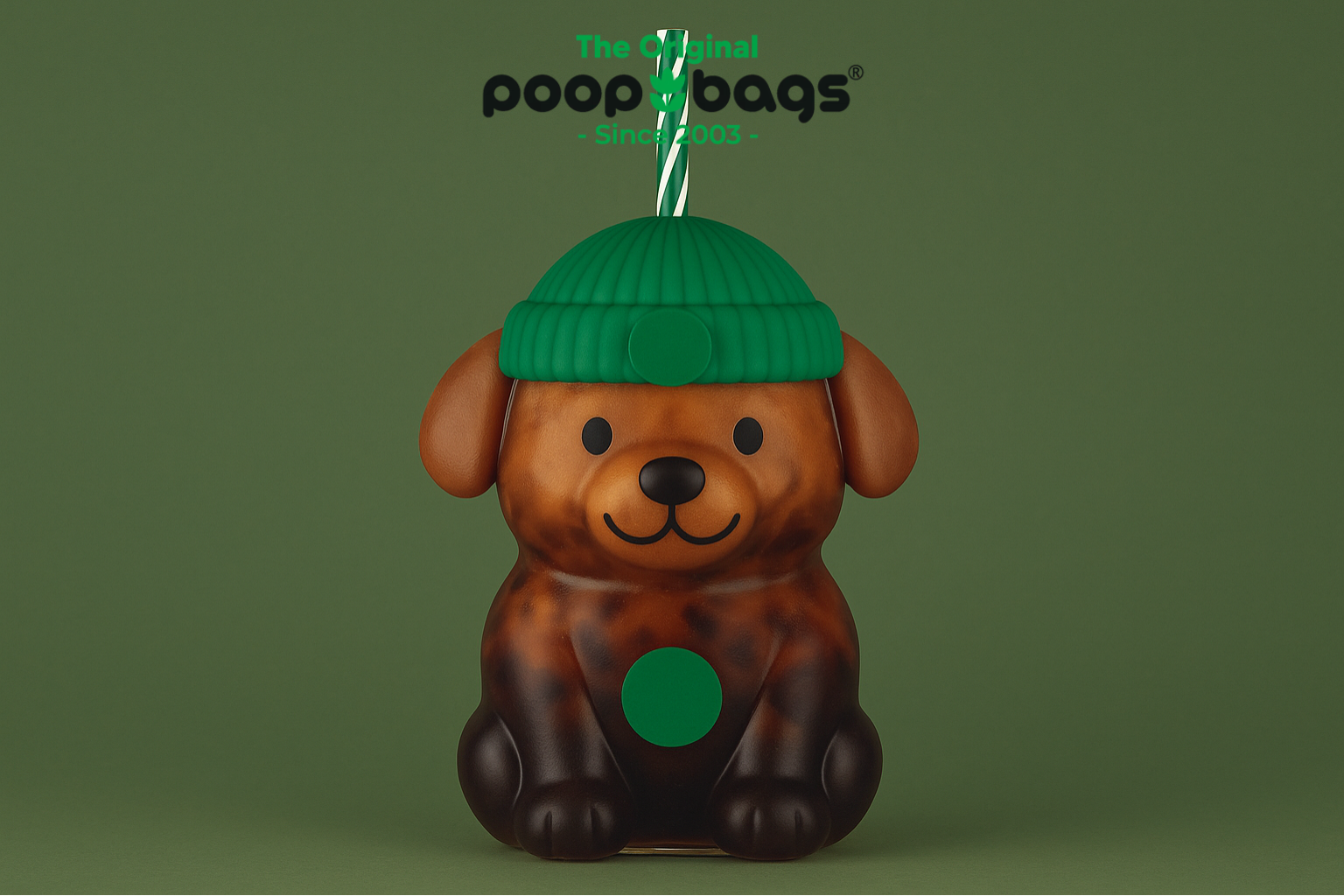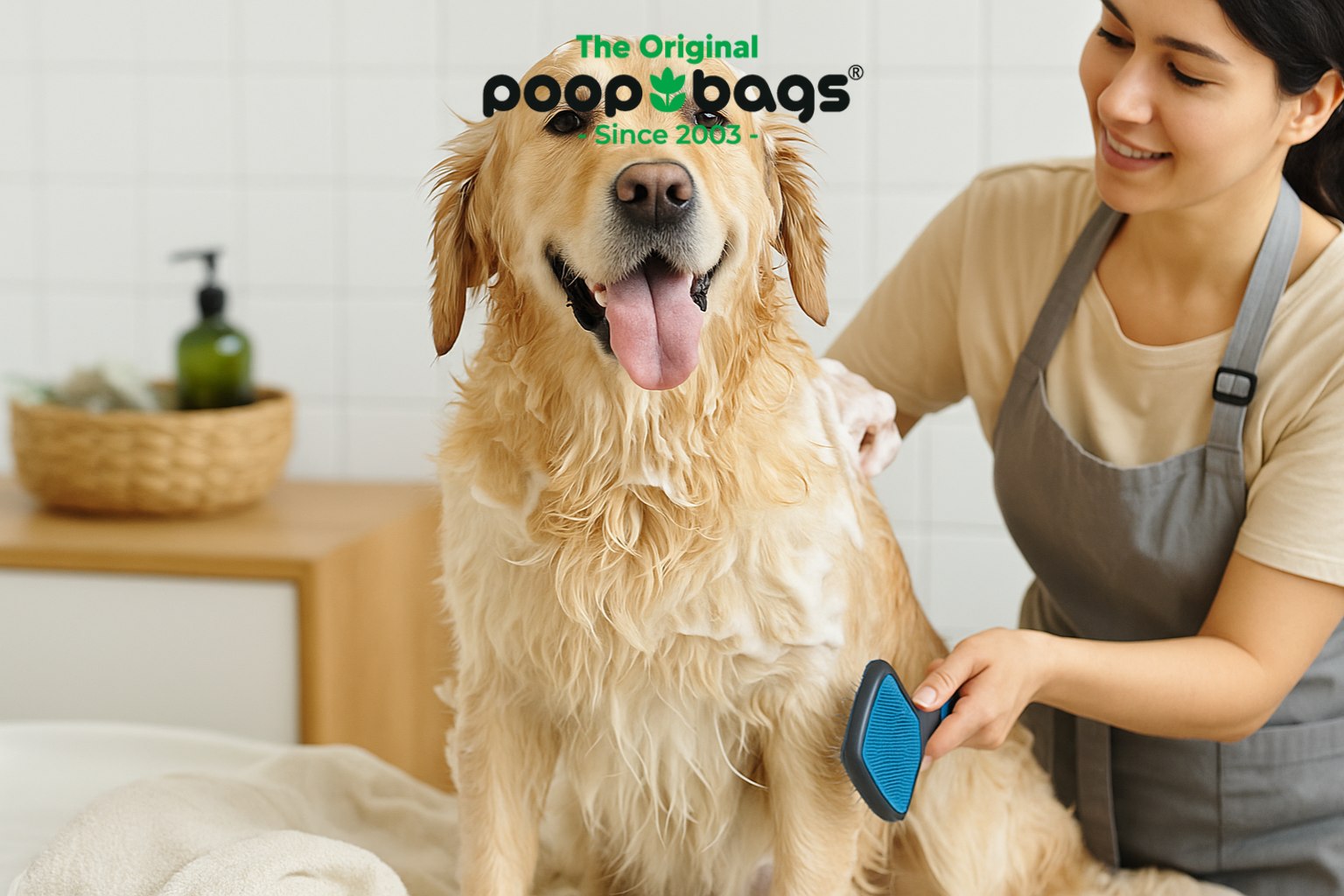Is your fur baby suffering from itchy skin? Does he have fleas? This is a horribly uncomfortable combination of problems for any dog. But there are some natural methods you can use to help your fur baby feel better and get rid of the fleas.
In this article, we’ll take a look 10 natural ways to rid your dog of fleas and help relieve and heal his itchy skin.
Dogs can develop itchy skin, also called pruritus, for many of the same reasons we do. Some of the common causes of itchy, irritated skin in dogs include:
- Allergies: food or environmental causes
- Bug bites: fleas, ticks, and other insects
- Parasites: such as mites, which are microscopic
- Dry skin
If your dog is suffering from pruritus, you may notice these symptoms on his skin:
- Skin sores
- Dry skin (may appear flaky)
- Rashes
- Lumps
- Redness
- Bumps
- Hair loss
It’s always a good idea to check your canine companion daily, or at least once a week, to see if his skin is showing any of these issues.
If you notice your dog seems to be itching, scratching, or even biting quite a bit, then it’s time to check him to see what’s causing the problem. However, if your canine companion begins to lose his appetite, becomes restless, or seems depressed and/or if the scratching breaks the skin, then it’s time to see the vet.
Natural Remedies to Rid Your Dog of Fleas
Here are some natural remedies you can use to rid your fur baby of fleas.
1). Give Your Dog a Bath
You can use a mild soap (made especial for dogs) and warm water to remove fleas from your dog’s fur and body. Just wash and rinse your dog like normal, then wipe him off with a clean, dry towel. Let him air dry as normal. The next step involves using a flea comb to find and remove remaining fleas after your dog’s bath.
2). Flea Comb
This is a completely natural and safe method to get fleas off your dog, plus you two can spend time together. Your fur baby will love the attention! These combs have very fine teeth, which are perfect for capturing fleas that may be on your canine companion.
Just use the comb on all areas of his body. If you find the comb has a flea, then dunk the comb into hot soapy water, swish it around, and then wipe it off and go back to combing. You may need to do this every day until fleas are completely gone.
3). Neem Oil
Before using any essential oil remedy on your dog, please talk with your vet first to make sure this is safe to use on your dog. Neem oil comes from the neem tree and is known to repel insects.
You can mix 1-part neem oil to 10 parts water, and a few drops of natural soap (used to make the water and oil mix). Add this mixture to a clean spray bottle, shake well, and then spray on your dog. You can also spray on a porous collar and make your own flea collar.
Avoid using this spray on open sores, wounds, cuts and never let it get near your dog’s eyes.
6 Natural Remedies for Your Itchy Dog
Here are some homemade DIY natural remedies that are safe to use if your fur baby is itchy.
Please note, before using any of these natural remedies on your dog, be sure to call your vet and make sure these remedies are safe to use on your dog. And if your dog’s symptoms worsen after using one of these methods, then call the vet immediately.
1). Colloidal Oatmeal Bath
This is a very old home remedy for itchiness that really works! However, if you know your dog is allergic to oats, then avoid using this method to relieve his itchiness. If he has an allergy to oats, this method will only make his condition worse.
Colloidal oatmeal relieves itchiness because it reduces inflammation in the skin, while cleansing the skin of allergens.
Using the highest setting on your food processor/blender/coffee grinder, grind about 1/3 to 1 cup of oats into a very fine powder. Next, stir the oat powder into a glass of warm water. If the water turns milky, then the oats are ready to use for fur baby’s bath. If the water doesn’t look milky, just grind the entire mixture again. The mixture should have a silky feel.
Then pour the oat mix into the warm bath water, and then stir. Fill the tub up with as much water as you feel your fur baby will tolerate, and then put him in the tub. With a cup, pour the water over your dog’s body until he’s soaked.
You can also rub some of the oatmeal mix into his skin, especially on those spots that are the itchiest. Let him soak for about 10 minutes and then rinse him off with warm water. Use a towel to gently dry him off and brush his fur. Then let him dry as normal.
2). Apple Cider Vinegar
This is another natural remedy you can use to help relieve your dog’s itchy skin. This method is better used as a spot treatment. For this remedy, you’ll need some apple cider vinegar and water. You want to have a 50:50 ratio of water to vinegar.
After putting the water and vinegar into the clean spray bottle, shake to mix until well combined, and then spray the solution on those areas that seem to be itchy on your fur baby.
This is another natural remedy you can use to ease your dog’s itchy skin. Coconut oil is great for relieving itchiness caused by allergies, skin infections, bug bites, and more. At the store, look for coconut oil of the highest quality. These brands may use words such as “virgin,” “organic,” etc. on the label. This method is best used on small areas of your fur baby’s skin. Using on his entire body can lead to very oily fur.
Just rub a small amount of the coconut oil between your hands, and then apply the oil to those areas that are itchy.
You may see some articles that recommend adding coconut oil to your dog’s diet; however, recent research has shown this to cause heart issues and other problems in dogs. So, don’t add coconut oil to your dog’s diet until after asking the vet if this is safe for your dog.
4). Chamomile & Green Tea
You can also use chamomile and green tea to help your dog with his itchy skin. All you need to do is fill your tub with warm water (not hot) and then allows several tea bags to steep for about 5 minutes. Then have your dog soak for about 5 minutes or more. Then rinse and dry as usual.
You can also use a tea bag to treat hot spots. Just steep the tea bag, then allow it to cool down completely and apply the tea bag directly to the irritated areas.
5). Aloe Vera
Aloe vera is safe to use on dogs; however, you’ll need to have an aloe vera gel that’s not made with alcohol. It’s also possible to apply the gel directly from the aloe vera plants you may have at home.
All you need to do is apply the aloe vera gel to your dog’s skin, where you see the irritation.
6). Baking Soda
You probably already have this in your panty! All you have to do is mix together a 50:50 ratio of baking soda and water. This will create a paste that you can apply directly to your canine companion’s skin. Then rinse the paste off after about 20 minutes.
We hope these remedies and methods help your dog to feel much better and stay flea-free!


